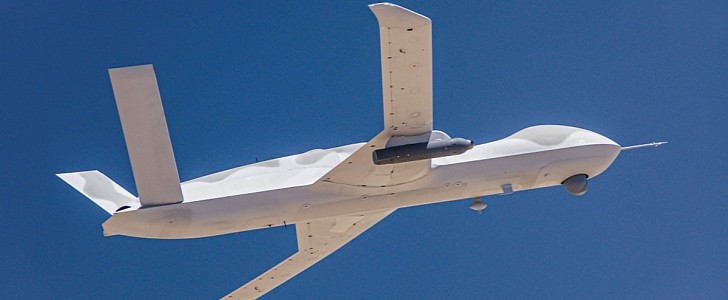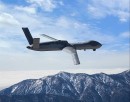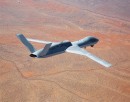In a recent live-fire test, a Legion Pod-equipped F-15 fighter jet shot down a QF-16 aerial target. Now, for the first time, a General Atomics (GA-ASI) drone has tracked down targets using Lockheed Martin sensor pod's infrared search and track capability. This demo brings military aviators closer to having autonomous systems that support manned-unmanned teaming in cooperative missions.
Legion Pod is a multi-function sensor system developed by Lockheed Martin that facilitates collaborative targeting operations in radar-denied settings. That is, Legion Pod is capable of detecting and tracking enemies while remaining hidden from the radar. The information gathered is then combined and shared with allies.
"We designed Legion Pod to passively detect and track targets for tactical fighter pilots in radar-denied environments. This capability provides the data necessary to enable unmanned vehicles to track and engage hostile airborne targets without human intervention," explained Dave Belvin, vice president of Sensors and Global Sustainment at Lockheed Martin.
GA-ASI began testing the system in December of last year as part of an autonomy flight test series designed to demonstrate the next generation air-to-air Unmanned Aerial Vehicle (UAV) functionality.
It took less than three months to integrate Legion Pod software into the Avenger Mission Management System (MMS). GA-ASI first used the sensor pod on its Avenger combat drone in January 2021, proving enhanced autonomous sensing capabilities for unmanned aircraft.
Now, in a recent test that went down on July 2nd in southern California, the drone was able to autonomously track and follow targets of interest. During the flight, the Legion Pod's infrared search and track capability detected multiple fast-moving aircraft flying in the area and transmitted the target tracking data to the Avenger's avionics, allowing the drone to perform the appropriate maneuvers to engage the targets.
"The success of this flight represents an important step toward more sophisticated autonomous missions for unmanned aircraft and MUM-T in a complex battlespace," said GA-ASI Vice President of Special Programs Chris Pehrson.
"We designed Legion Pod to passively detect and track targets for tactical fighter pilots in radar-denied environments. This capability provides the data necessary to enable unmanned vehicles to track and engage hostile airborne targets without human intervention," explained Dave Belvin, vice president of Sensors and Global Sustainment at Lockheed Martin.
GA-ASI began testing the system in December of last year as part of an autonomy flight test series designed to demonstrate the next generation air-to-air Unmanned Aerial Vehicle (UAV) functionality.
It took less than three months to integrate Legion Pod software into the Avenger Mission Management System (MMS). GA-ASI first used the sensor pod on its Avenger combat drone in January 2021, proving enhanced autonomous sensing capabilities for unmanned aircraft.
Now, in a recent test that went down on July 2nd in southern California, the drone was able to autonomously track and follow targets of interest. During the flight, the Legion Pod's infrared search and track capability detected multiple fast-moving aircraft flying in the area and transmitted the target tracking data to the Avenger's avionics, allowing the drone to perform the appropriate maneuvers to engage the targets.
"The success of this flight represents an important step toward more sophisticated autonomous missions for unmanned aircraft and MUM-T in a complex battlespace," said GA-ASI Vice President of Special Programs Chris Pehrson.








